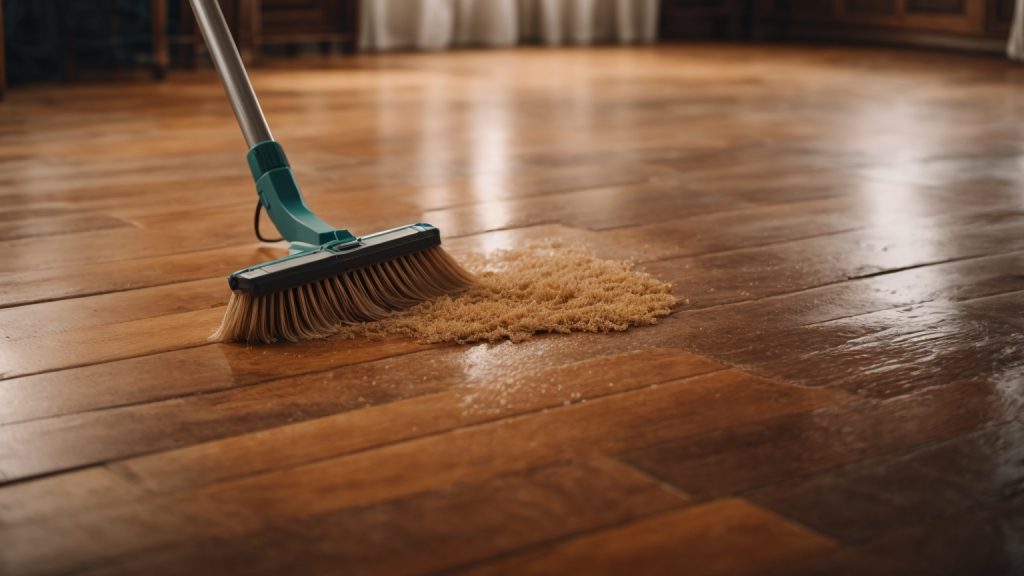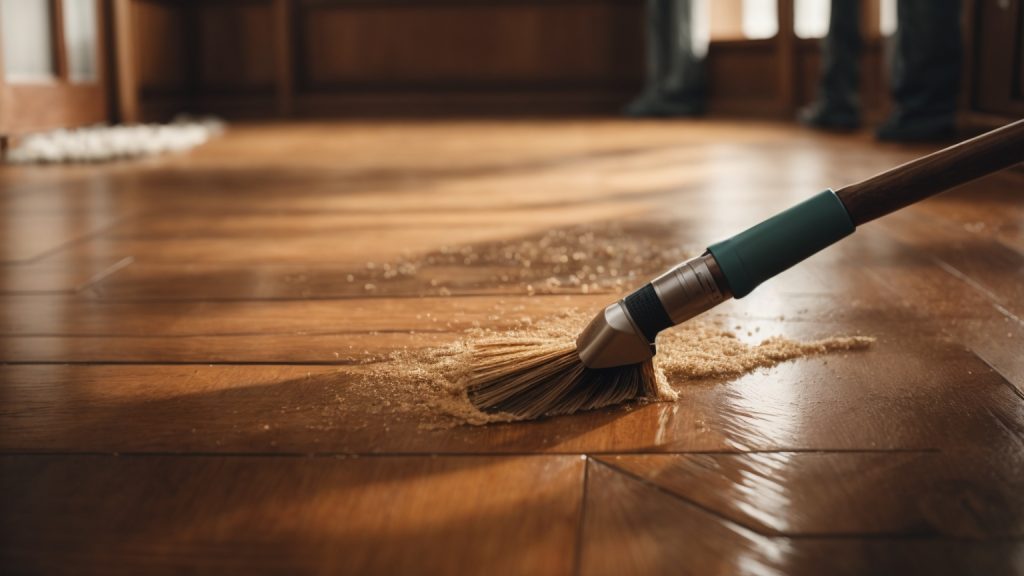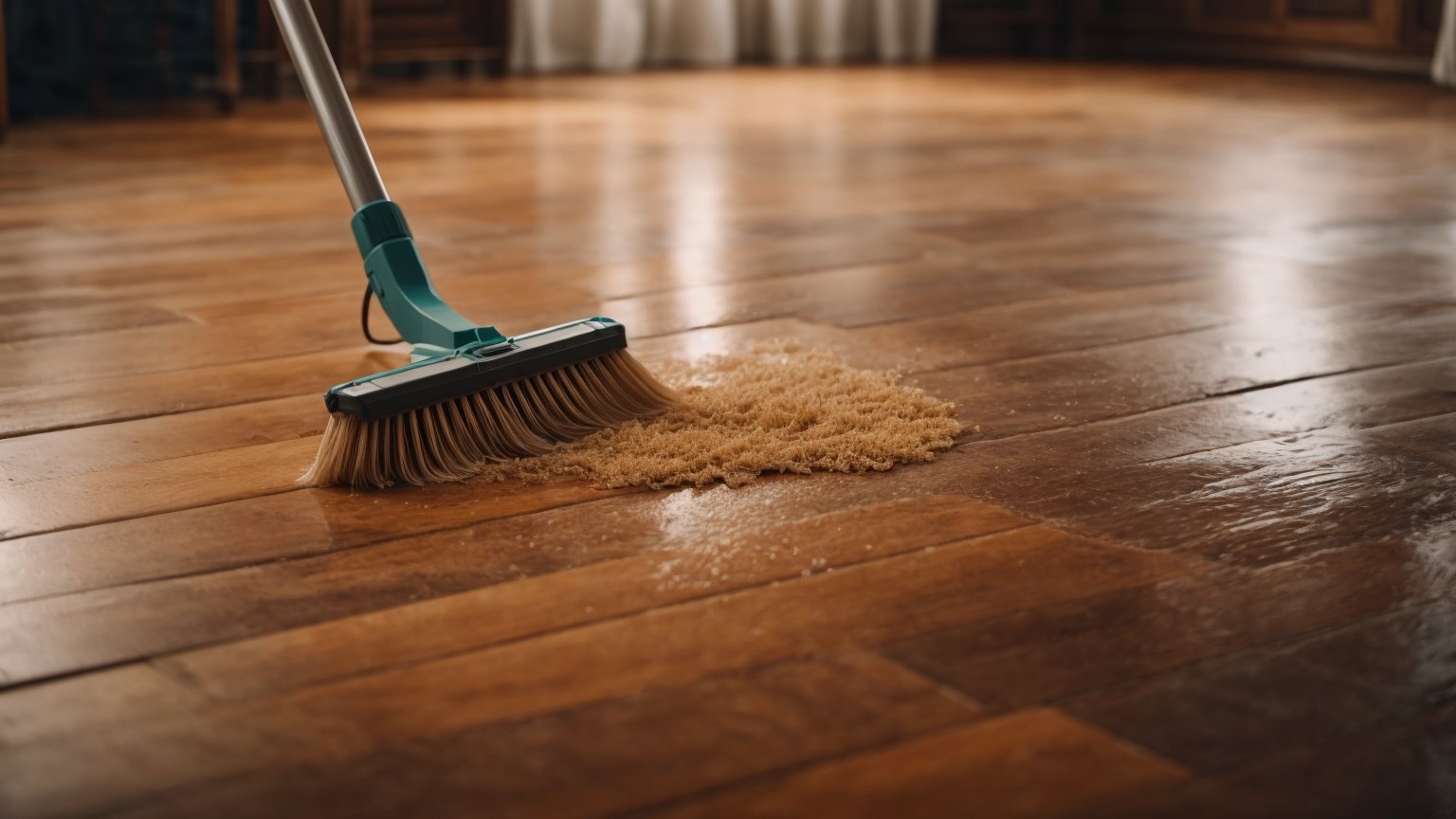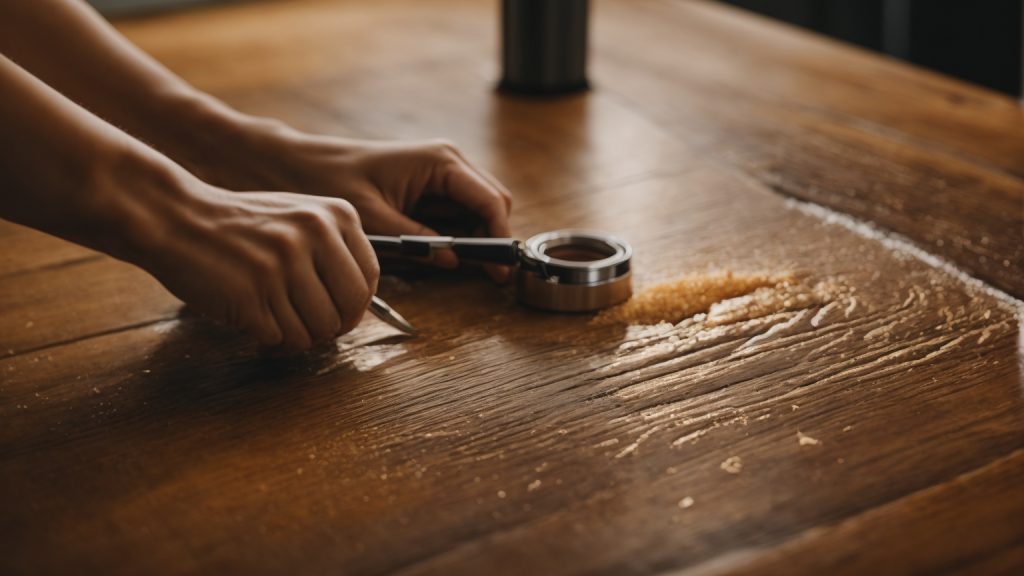Are you tired of seeing your wooden floors looking dull and dirty? Do you want to know what you can use to clean them effectively and efficiently? Look no further! In this article, we will provide you with some tips and tricks on how to clean your wooden floors and keep them looking their best.
Cleaning wooden floors may seem like a daunting task, but it doesn’t have to be. The key is to use the right products and techniques that won’t damage the wood. There are several options available, from commercial wood-cleaning products to DIY solutions. We will explore the pros and cons of each so that you can make an informed decision on what to use for your specific needs.
It’s important to note that not all wooden floors are the same, and what works for one may not work for another. Factors such as the type of wood, finish, and age of the floor can all play a role in determining the best cleaning method. So, let’s dive in and discover what you can use to clean your wooden floors and achieve that beautiful, shiny finish you desire.
Understanding Your Wooden Floors

Wooden floors are a beautiful addition to any home, but they also require proper maintenance to keep them looking their best. Before you start cleaning your wooden floors, it’s important to understand the type of wood and finish used. Here are some things to keep in mind:
Types of Wood
Different types of wood have different properties that affect their durability and how they should be cleaned. Here are some common types of wood used for flooring:
- Oak: durable and resistant to wear and tear
- Maple: hard and dense, with a uniform texture
- Pine: soft and prone to scratches and dents
- Cherry: soft and prone to scratches, but develops a rich patina over time
Types of Finish
The finish on your wooden floors affects how you should clean them. Here are some common types of finishes:
- Polyurethane: a clear, protective layer that is easy to clean
- Wax: a traditional finish that requires regular maintenance
- Oil: penetrates the wood to protect it from within, but requires regular maintenance
- Varnish: a hard, durable finish that is resistant to scratches and stains
Cleaning Tips
Once you understand the type of wood and finish on your floors, you can start cleaning them properly. Here are some tips to keep in mind:
- Sweep or vacuum your floors regularly to prevent dirt and dust from scratching the surface.
- Use a damp mop to clean your floors, but avoid using too much water, as it can damage the wood.
- Avoid using harsh chemicals or vinegar, as they can strip the finish and damage the wood.
- Use a cleaner specifically designed for your type of finish, and follow the instructions carefully.
- Wipe up spills immediately to prevent them from seeping into the wood and causing damage.
By understanding your wooden floors and taking proper care of them, you can enjoy their beauty for years to come.
Choosing the Right Cleaning Products
When it comes to cleaning wooden floors, it’s important to choose the right products to avoid damaging the wood. There are two main categories of cleaning products: natural products and commercial cleaners.
Natural Products
If you prefer to use natural products to clean your wooden floors, there are several options available:
- Vinegar and water: Mix equal parts of white vinegar and water in a spray bottle and use it to clean your floors. Vinegar is a natural disinfectant and can help remove dirt and grime from your floors.
- Olive oil and vinegar: Mix 1/4 cup of olive oil with 1/4 cup of white vinegar in a spray bottle and use it to clean your floors. The olive oil will help moisturize the wood and restore its shine.
- Lemon juice and water: Mix equal parts of lemon juice and water in a spray bottle and use it to clean your floors. Lemon juice is a natural cleaner and can help remove stains and odors from your floors.
Commercial Cleaners
If you prefer to use commercial cleaners to clean your wooden floors, there are several options available:
- Bona Hardwood Floor Cleaner: This is a popular commercial cleaner that is safe for use on hardwood floors. It is non-toxic and does not leave any residue on your floors.
- Murphy Oil Soap: This is another popular commercial cleaner that is safe for use on hardwood floors. It is made from natural ingredients and can help remove dirt and grime from your floors.
- Method Wood Floor Cleaner: This is a natural cleaner that is safe for use on hardwood floors. It is made from plant-based ingredients and does not contain any harsh chemicals.
When choosing a commercial cleaner, make sure to read the label carefully to ensure that it is safe for use on hardwood floors. Avoid using cleaners that contain harsh chemicals or abrasives, as these can damage the wood.
Cleaning Techniques

When it comes to cleaning your wooden floors, there are two main techniques you can use: dry cleaning and wet cleaning. Each method has its advantages and disadvantages, so it’s important to choose the right one for your specific needs.
Dry Cleaning
Dry cleaning is a great technique for removing loose dirt, dust, and debris from your wooden floors. Here are a few methods you can use:
- Sweeping: Use a soft-bristled broom to sweep your floors regularly. This will help prevent dirt and debris from accumulating and scratching the surface of your floors.
- Vacuuming: Use a vacuum cleaner with a soft-brush attachment to remove dirt and debris from your floors. Be sure to avoid using a vacuum with a beater bar, as this can scratch the surface of your floors.
- Dry Mopping: Use a microfiber mop or a dry mop to pick up dirt and debris from your floors. Be sure to avoid using a wet mop, as this can damage your floors.
Wet Cleaning
Wet cleaning is a great technique for removing stains and spills from your wooden floors. Here are a few methods you can use:
- Damp Mopping: Use a damp mop with a mild cleaning solution to clean your floors. Be sure to wring out the mop thoroughly before using it, as excess water can damage your floors.
- Vinegar Solution: Mix equal parts water and vinegar to create a natural cleaning solution for your floors. Apply the solution to your floors with a damp mop, and then rinse with clean water.
- Commercial Cleaners: There are many commercial cleaners available that are specifically designed for cleaning wooden floors. Be sure to follow the manufacturer’s instructions carefully when using these products.
Remember to always test any cleaning solution on a small, inconspicuous area of your floor before using it on the entire surface. This will help prevent any damage or discoloration to your floors.
Preventive Measures
Taking preventive measures is the best way to ensure that your wooden floors remain clean and shiny. Here are some tips for maintaining your floors:
Regular Dusting
Dust and dirt can easily scratch and dull the surface of your wooden floors, so it’s important to dust them regularly. You can use a soft-bristled broom or a microfiber dust mop to remove dirt and debris. Make sure to avoid using a vacuum with a beater bar, as it can cause scratches. If you prefer to use a vacuum, make sure to use a bare-floor setting.
Avoiding Water Damage
Water can cause serious damage to wooden floors, so it’s important to avoid any spills or excess moisture. Make sure to wipe up spills immediately using a dry cloth. Avoid using wet mops or steam cleaners, as they can cause warping and damage to the wood. If you need to clean your floors with water, make sure to use a damp mop and dry the floors thoroughly afterwards.
Using Floor Mats
Floor mats can help prevent dirt and debris from being tracked onto your wooden floors. Place mats at all entryways and high-traffic areas to help trap dirt and moisture. Make sure to clean the mats regularly to prevent any buildup of dirt and debris.
By following these preventive measures, you can help keep your wooden floors looking clean and shiny for years to come.
Restoring and Maintaining Shine
If your wooden floors have lost their shine, don’t worry! There are several ways to restore and maintain their shine.
Polishing
Polishing is a quick and easy way to restore the shine of your wooden floors. You can use a floor polish or wax to bring back the shine. Here are the steps to polish your wooden floors:
- Clean the floor thoroughly with a hardwood floor cleaner and let it dry completely.
- Apply the polish or wax on a small section of the floor with a clean cloth or mop.
- Rub the polish or wax into the floor in a circular motion.
- Repeat the process on the rest of the floor.
Note that you should avoid using too much polish or wax as it can leave a residue on the floor.
Recoating
Recoating is another way to restore the shine of your wooden floors. It involves applying a new coat of finish to the floor. Here are the steps to recoat your wooden floors:
- Clean the floor thoroughly with a hardwood floor cleaner and let it dry completely.
- Lightly sand the floor with a fine-grit sandpaper to remove any scratches or imperfections.
- Apply a new coat of finish with a clean mop or applicator.
- Let the finish dry completely before walking on the floor.
Note that you should choose a finish that is compatible with the existing finish on your floor. Also, make sure to follow the manufacturer’s instructions when applying the finish.
By following these tips, you can restore and maintain the shine of your wooden floors.



